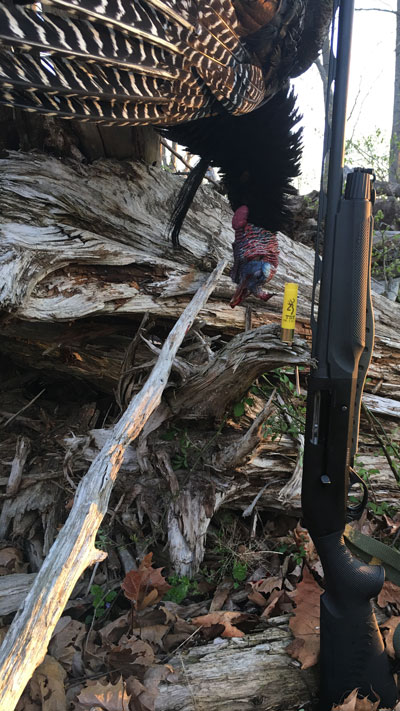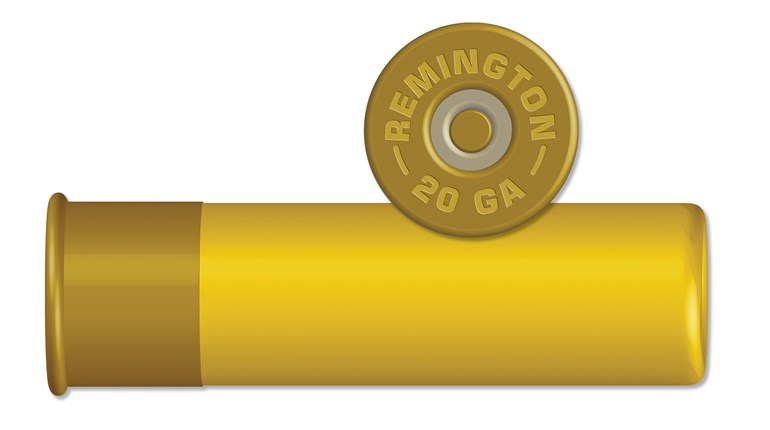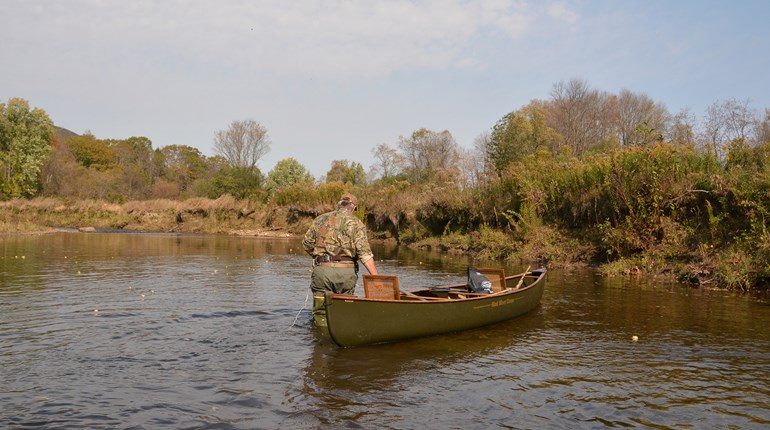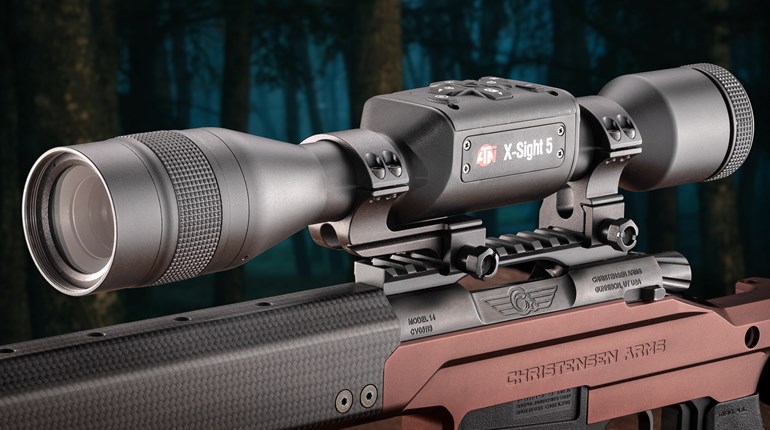
When a shotgunning pursuit is mentioned, for most individuals—and especially those senescent—the mind automatically thinks “12-gauge.” It’s little wonder why, either; according to Frank C. Barnes in Cartridges of the World, 10th Ed., “If there is one shotshell that holds all titles as most versatile, most popular, and most varied in loading, the 12-gauge is it. Except for the 22 rimfire, by almost any measure, the 12-gauge is the most popular sporting chambering ever offered.” Available in lengths ranging from 2-inch to 3½-inch and featuring payloads weighing upward of 2¼ ounces, the “mighty twelve” can be loaded to handle any shotgunning task with aplomb. Need proof? At the time of this writing, MidwayUSA lists 447 offerings in the ubiquitous gauge.
“By a wide margin, the 20-gauge is the second most popular U.S. chambering,” wrote Barnes. And, that admiration is only growing. Why? As Barnes explained, “The 20-gauge has always been popular because it can be chambered in a smaller, lighter gun compared to the 12-gauge and offers sufficient punch for use against most sporting fowl.” While Barnes’ assessment was spot-on when published—in 2003—advancements in wads, propellants, and, most importantly, shot materials have redefined the gauge’s capabilities and upended the status quo. In fact, a developing trend among waterfowl and, especially, turkey hunters, is opting for sub-gauges over the omnipresent 12-gauge. Should you join them? Here is what you need to know before considering, or transitioning to, the “terrific twenty.”

Ammunition & Capabilities
While Barnes had positive views about the gauge’s game-getting abilities, other authors of yesteryear didn’t always share the sentiment. For instance, in Duck Hunting (1953), author John G. MacKenty wrote, [The] 20 gauge, in my opinion, is definitely too small for ducks, although I must admit that I have seen experts do some wonderful duck shooting with this lady’s gun.” But not all were as abrasive. In The Experts Book of Upland Bird & Waterfowl Hunting (1975), contributor Norman Strung reported, “For close-in shooting—birds [puddle ducks] that consistently decoy within 35 to 45 yards—nothing beats a 20-gauge chambered for 3-inch magnums. Their punch is equivalent to express 12s, and the light little 20s have snap and speed that make them a delight to feel on your shoulder,” Still, Strung, as well as fellow author, George Reiger, who chimed in on hunting diving ducks, believed that a 3”-chambered 12 gauge was a superior choice for fowling. Of course, these observations were made when lead shot was permitted for hunting waterfowl and coots. Why does that matter? Capacity.
As a shot-making material, lead has several desirable attributes—particularly for sub-gauges. Foremost, its high density (11.43 g/cc) enables the use of smaller, heavier shot, which nicely pair with the restrictive confines of smaller shotshells such as the 20-gauge. These weighty pellets penetrate deeply at-distance, and the malleability of the material improves delivery of the projectiles’ energy. What’s more, it’s economical. But that’s a bygone era, never to return; the heavy metal was banned nationwide for waterfowling in 1991. Alternative metals were needed.
Since the outlawing of lead for waterfowl and coot hunting, ammunition and projectile manufacturers have created a mind-boggling array of “non-toxic” alloys. Until recently, though, sub-gauges were often handicapped by the replacement metals. Here, steel is an exemplar. Why? Whereas lead is dense, steel isn’t; with a density of about 7.8 g/cc, achieving ballistic parity to lead downrange requires an increase in steel pellet size (usually one to two sizes) and velocity. Problem is, fitting sufficient quantities of the larger pellets in a small shell (i.e. 20-gauge) is problematic, and the fewer, bigger pellets often created lackluster patterns. And, the wad and propellant must still fit. For these reasons, early 20-gauge steel loads were poor performers. Fortunately, modern munitions such as Federal’s Black Cloud FS and Browning’s Wicked Wing XD included, propel innovative, pattern-enhancing wads filled with upward of one ounce of steel shot to lethal velocities. Number 2s are the largest practical steel shot for use in the 20-gauge, and even then I only prefer them in 3-inch shells. Number 4s are widely available, but, frankly, Number 3 is the best all-around option.

Bismuth was an early alternative to lead, but quickly fell out of favor due to increasing costs and its tendency to fracture, thus negatively affecting patterns and penetration. Fortunately, there’s been a complete turnaround; bismuth is now affordable, relatively speaking, and the new alloys and plating have greatly increased its downrange performance. Why is this important? With a density of 9.6 g/cc, bismuth more closely approximates the ballistics of lead than does steel, and thus similar shot sizes can be used. Obviously, this is beneficial in the 20-gauge.

The proverbial “gamechanger” for sub-gauges was the creation of tungsten-based shot. Having a density of 19.3 g/cc, tungsten is markedly heavier than lead; therefore, pellets made from the former are typically several sizes smaller than lead ones weighing the same. Pure tungsten isn’t used for shot; rather, it’s alloyed with other metals that lessen its density to varying degrees. The densest, and therefore heaviest, is Tungsten Super Shot (TSS), which is also referred to as TSS-18, among other names, and has a target density of 18.0 to 18.2 g/cc. Not only are the pellets weighty, but they’re also incredibly hard. Being non-malleable, extra-tight patterns and deep penetration at long ranges are the rule. It’s these attributes that make TSS popular for spring gobbler hunting in particular, making hunters reconsider the need for a 12-gauge. After all, if a 20-gauge can be loaded with upward of 1 5/8 ounces of TSS and cleanly kill a longbeard at traditional 12-gauge distances, why carry the heavier gun? I no longer do. Five of my last six Virginia longbeards fell to a Benelli M2 20-gauge loaded with Browning 3-inch TSS turkey loads.
TSS as a standalone, or when paired with steel shot—as is found in Federal Black Cloud TSS or Apex Ammunition TSS/S3 Blend—has also redefined the capabilities of the 20-gauge for waterfowling. Nothing is off the menu anymore, and there’s no need to upsize to a 12-gauge. When using TSS Number 7s to 9s, all waterfowl are within the realm of the 20; however, you must choose the correct size for the species. Number 7s are great for geese in particular, while the smaller sizes will cleanly take ducks. Using the abovementioned sizes, I’ve bagged Canada geese, brant, and a variety of ducks ranging in size from buffleheads to scoters. Second shots are rare.
Although TSS is the Holy Grail of pellets, other tungsten-based amalgamations of lesser density—and less expense—are available. While some, such as Kent Tungsten Matrix, approximate the density of lead (10.8 g/cc), others, including HEVI-Shot HEVI-XII (12.0 g/cc), exceed it. Therefore, shot sizes similar (or slightly smaller) to those of lead are equally (if not more) effective. Kent loads 1 ounce of its non-toxic shot in its 20-gauge. 2¾-inch shell, or 1 1/8 ounces in its 3-inch offering. HEVI-XII comes only in 20-gauge 3-inch, but it’s available with 7/8 of an ounce or 1¼ ounces of shot. For most waterfowling, these are superb options.

You’re probably toiling with the question, “Is the 20-gauge for me?” Need more proof of its capabilities on waterfowl? Less than a week prior to writing this, my son, Gabriel, and I used 20-gauges while waterfowl hunting on Virginia’s Eastern Shore. He used a Stoeger M3020 for the duration of the hunt. Over a two-day period, he collected the following: one Atlantic brant; two scoters; a ruddy duck; and eight buffleheads. Nigh all were one-shot kills. Meanwhile, my 20-gauge bagged two Atlantic brant and a bufflehead before switching to field test other shotguns for articles. It worked like magic. All species were taken with steel, bismuth (handloaded), and TSS shot.

Lead loads have benefitted from technological advances, too. A perfect example is Winchester’s Long Beard XR 20-gauge turkey loads, which incorporates the same Shot-Lok Technology and copper-plated shot that greatly extended the effective range of its 12-gauge loads within the same line. The result: 20-gauge shells that are equally effective to older style 12-gauge loads, despite containing less shot.

Twenty-Gauge Shotguns: The Perfect Pairing
Ammunition is only part of the equation; there are real benefits to using a 20-gauge shotgun, too. The first and most obvious advantage is slighter dimensions. The scaled-down size also results in reduced weight, which makes a featherweight 20-gauge easier to carry on long jaunts, such as side-hilling mountains and walking lengthy CRP fields, as well as livelier in the hands. In challenging positions, such as a layout blind or boat, there’s nothing better.

Of course, reduced heft increases perceived recoil. Unless you’re shooting a lot of 3-inch loads, though, that shouldn’t be an issue. Felt recoil can be attenuated by selecting a semi-automatic shotgun (especially a gas-operated model), porting the barrel, installing a quality aftermarket recoil pad (or selecting a shotgun with one), or using lighter loads. My go-to is an Inertia Driven (ID) Benelli M2 with barrel porting by Mag-Na-Port. Recoil is so minimal that, even shortly after neck surgery, I was dropping sea ducks with it. The same shotgun also collected the previously mentioned gobblers, as well as earned me top honors in NSCA 20-gauge sporting clays events.

Beyond the Benelli M2, there are a host of excellent 20-gauge-chambered, semi-automatic shotguns that’ll weather the worst. Some of the finest are: Benelli Ethos Cordoba BE.S.T. and Super Black Eagle 3 BE.S.T.; Browning Silver Field; Beretta A300 Ultima and A400 Xtreme Plus; Stoeger M3020; Franchi Affinity 3; and Winchester SX4. The Mossberg International SA-20 and CZ 720 G2 are also options. In pump-actions, good choices include: Benelli Nova; Browning BPS Field Composite; Remington Model 870; Mossberg Model 500, 505, and 510; CZ 620; and Winchester SXP. As for over-unders, consider the following: Browning Citori CXS, Beretta 686 Silver Pigeon I Sporting; Franchi Instinct L; Mossberg International Silver Reserve; Savage 555; and CZ Drake, Redhead Premier, and Upland Ultralight.
In general, aluminum-framed shotguns are better choices than steel ones when hunting waterfowl—especially in saltwater or brackish waters—due to their resilience against corrosion. Still, steel parts such as the barrel can rust quickly and easily; therefore, spend the extra money up front to get a camo-clad model, which offers better resistance to rust. I also favor inertia-operated shotguns to those powered by gas, as they’re faster and easier to clean, and clean you will when you’re pursuing waterfowl with your 20-gauge. It’ll quickly become your favorite.
If you’re tired of being abused by your 12-gauge, or are looking for a new or first gun, don’t overlook the 20-gauge. For those fond of pursing fowl, it’ll probably be all you ever need.



































